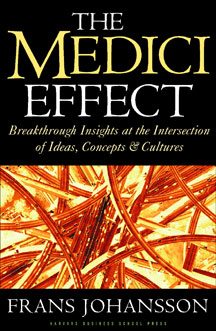 A much-read article in the New York Times last November clarified an emerging debate about what would or should be called “Web 3.0”. In it, John Markoff defined Web 3.0 as a set of technologies that offer efficient new ways to help computers organize and draw conclusions from online data, and that definition has since dominated discussions at conferences, on blogs, and among entrepreneurs. "There is a clear understanding that there have to be better ways to connect the mass of data online and interrogate it," says Daniel Waterhouse, a partner at the venture capital firm 3i. Waterhouse calls himself skeptical of the "Web 3.0" hyperbole but has invested in at least one Semantic Web-based business, the U.K. company Garlik. "We're just at the start," he says. "What we can do with search today is very primitive."
A much-read article in the New York Times last November clarified an emerging debate about what would or should be called “Web 3.0”. In it, John Markoff defined Web 3.0 as a set of technologies that offer efficient new ways to help computers organize and draw conclusions from online data, and that definition has since dominated discussions at conferences, on blogs, and among entrepreneurs. "There is a clear understanding that there have to be better ways to connect the mass of data online and interrogate it," says Daniel Waterhouse, a partner at the venture capital firm 3i. Waterhouse calls himself skeptical of the "Web 3.0" hyperbole but has invested in at least one Semantic Web-based business, the U.K. company Garlik. "We're just at the start," he says. "What we can do with search today is very primitive."
Communicating relevant information in a relevant manner is fundamental to delivering experiences that expands ones views and understandings; the essence of the value of the Internet. For some time now, and from now on, content will be the most element. Whether it's a product description or catalog entry, an e-mail dialogue, or Web-marketed hard goods, the ability to deliver the appropriate content to the appropriate recipients is the essence of creating value.
As the Web evolves, it's becoming different, very different. The pursuit of the semantic Web.is a major aspect of the shift and is planned to be integrated in the web 3.0. What the semantic Web's enthusiasts promise is the transformation of documents, videos, e-mails, music, images, everything — into elements of a database. This one database will stretch across, and through, the Web, and will be increasingly searchable in natural language, resulting in more effective searches from far more natural queries, generating far more specific and appropriate results from within Web pages, documents, videos, exclusive of the applications in which they were created or housed, rather than the morass of Web sites and pages that searches return now.
Like mashups on steroids, the difference is that the machines including your tools, programs, and software agents will do the mashing for you and those you are interacting with. For this approach to Web 3.0 to work the way the, World Wide Web Consortium (W3C) envisions it, requires the development of "common formats for integration and combination of data drawn from diverse sources" – a true iteration or transformation of the way the Web works.
In short, it will be a Web of data designed or redesigned for interpretation by the machines we use to store and access the data. And that has big implications for the way we'll do things. For examples, humans on the web will be much more effective at identifying and reaching the precise people they want to reach, rather than today's "craft your keywords and trust you'll get proper placement" approach. As browsers, calendars, clipboards grow more familiar with their users' preferences, histories, and needs, they'll be far likelier to bring relevant content to the users attention as opposed to the current dependence upon carefully crafted keywords vying to catch the attention of a search engine.
What this evolution of the Web truly represents, is another step to intelligence being created in the machines, making our lives simpler and more rich and changing everything about what we do and how we do it.

 In Pink's book, A Whole New Mind, the author correctly identifies a series of trends and changes, many of which have been previously addressed here, that predict a shift from left brain to right brain humans being the source of advancing society in the coming years. The book explores the nature of personal fulfillment and humanity as well as shifts and the related revolution. An oustanding book where some of the concepts speak to organizational issues and trends regarding the nature of the consumer or member participant and how relationships with these players and various shifts in demography are creating radical change. Highly recommended is the 2004 Bentley College lectrures on Does Marketing Need Reform ?, which expertly reflects on these issues with well regarded philosophers versed on the topic.
In Pink's book, A Whole New Mind, the author correctly identifies a series of trends and changes, many of which have been previously addressed here, that predict a shift from left brain to right brain humans being the source of advancing society in the coming years. The book explores the nature of personal fulfillment and humanity as well as shifts and the related revolution. An oustanding book where some of the concepts speak to organizational issues and trends regarding the nature of the consumer or member participant and how relationships with these players and various shifts in demography are creating radical change. Highly recommended is the 2004 Bentley College lectrures on Does Marketing Need Reform ?, which expertly reflects on these issues with well regarded philosophers versed on the topic. 












